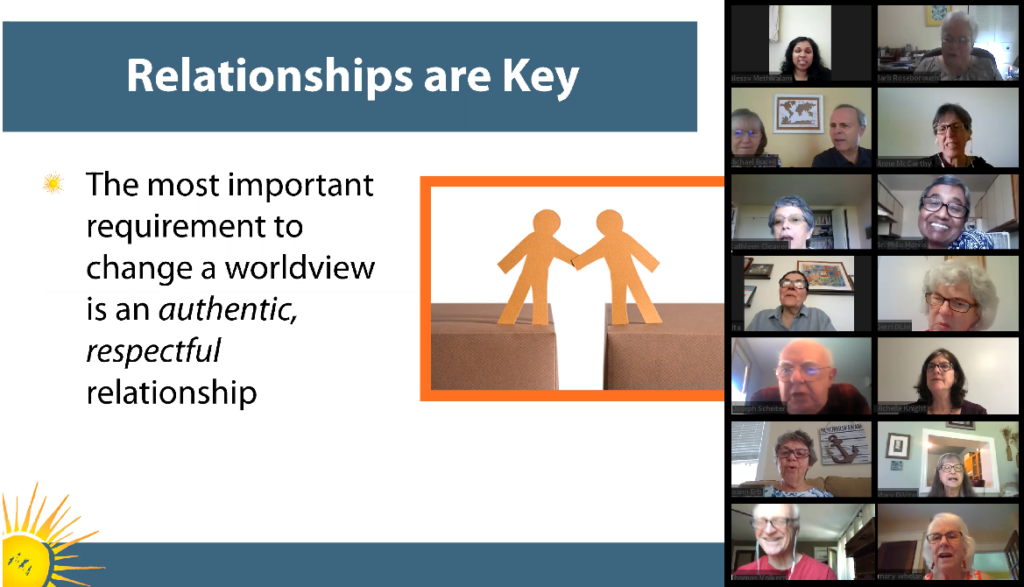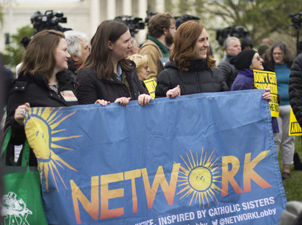
Working Towards Transformation in our Country
Sister Emily TeKolste, SP
August 13, 2020
Everyone knows how difficult it can be to have a conversation about politics or current events with someone you disagree with. But avoiding these conversations is contributing to our nation’s increasing polarization, not to mention the harmful effects of this division on family and community ties.
In May, I presented NETWORK’s Transformative Conversations to Bridge Divides training to NETWORK advocates from Philadelphia and Pittsburg. About 20 participants came together online to learn and practice ways to foster productive conversations and create the conditions needed for transformation to occur. Some of the key takeaways and commitments from participants included, “doing more preparation before difficult conversations,” “approach potentially confrontational conversations with a little less arrogance,” and “think more carefully about the other person when I need to have a difficult discussion.”
After the training, Gerri in Philadelphia found “There are constructive, concrete, successful ways we can have meaningful conversations with those we love who have opinions other than ours.” As we approach the November election, NETWORK will provide additional opportunities for all members of our Spirit-filled network to participate in this Transformative Conversations training, as well as other trainings and activities. Together we can transform our policies and our nation!
PHOTO: Participants learn how to build the foundation for transformative conversations.
5 Steps to a Healthy, Transformative Conversation
- Be Curious
Seek to learn about the other person’s perspective
- Listen
Listen fully and attentively, with an open mind
- Review
Repeat back what you heard to make sure you understand correctly
- Validate
Acknowledge what they said, even if you feel differently
- Express
Share your truth, your assessment of the issue, your reasoning
Learn more: networkadvocates.org/transform
This story was originally published in the Third Quarter 2020 issue of Connection magazine. Read the full issue.







